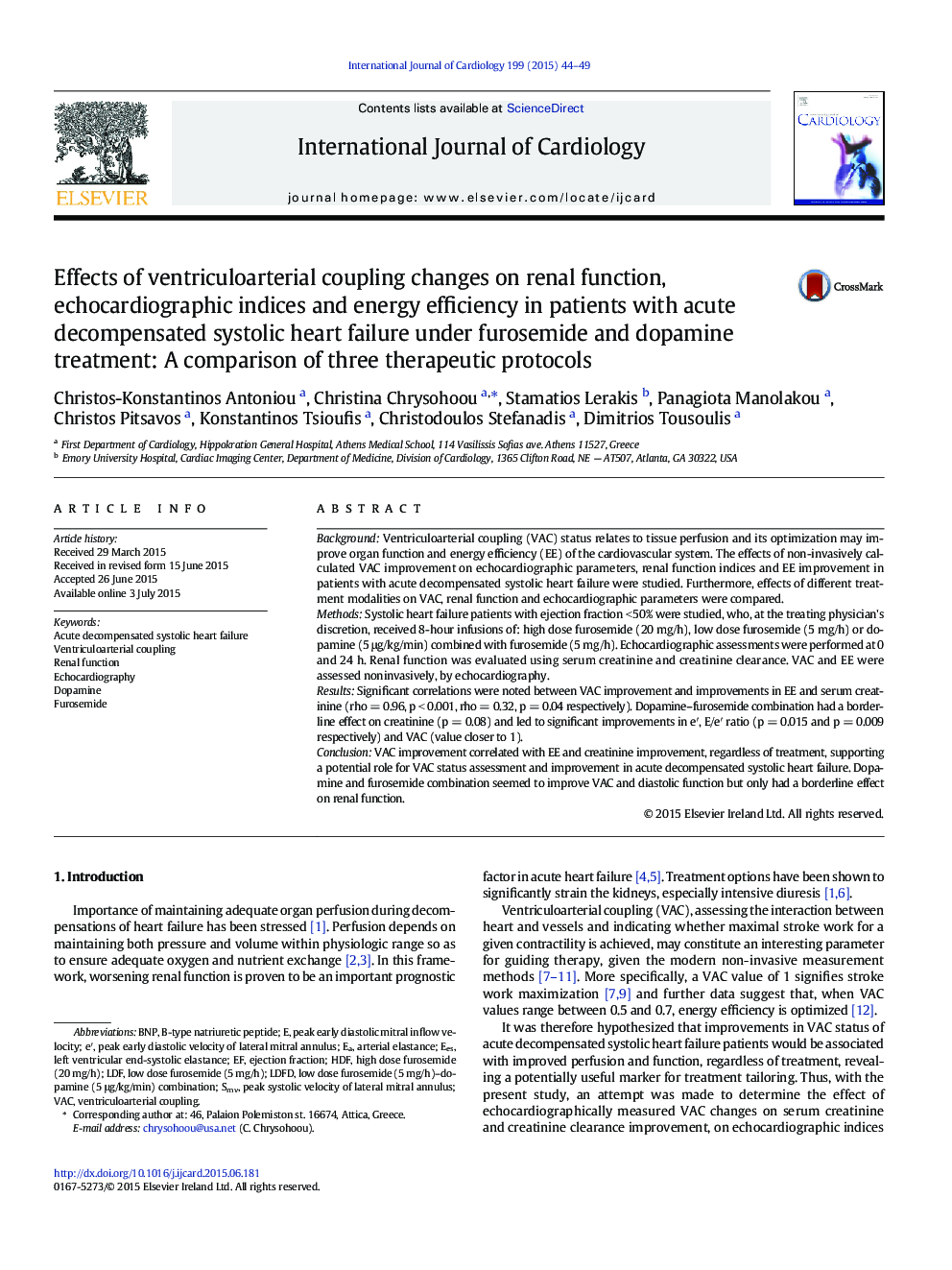| Article ID | Journal | Published Year | Pages | File Type |
|---|---|---|---|---|
| 5965832 | International Journal of Cardiology | 2015 | 6 Pages |
BackgroundVentriculoarterial coupling (VAC) status relates to tissue perfusion and its optimization may improve organ function and energy efficiency (EE) of the cardiovascular system. The effects of non-invasively calculated VAC improvement on echocardiographic parameters, renal function indices and EE improvement in patients with acute decompensated systolic heart failure were studied. Furthermore, effects of different treatment modalities on VAC, renal function and echocardiographic parameters were compared.MethodsSystolic heart failure patients with ejection fraction < 50% were studied, who, at the treating physician's discretion, received 8-hour infusions of: high dose furosemide (20 mg/h), low dose furosemide (5 mg/h) or dopamine (5 μg/kg/min) combined with furosemide (5 mg/h). Echocardiographic assessments were performed at 0 and 24 h. Renal function was evaluated using serum creatinine and creatinine clearance. VAC and EE were assessed noninvasively, by echocardiography.ResultsSignificant correlations were noted between VAC improvement and improvements in EE and serum creatinine (rho = 0.96, p < 0.001, rho = 0.32, p = 0.04 respectively). Dopamine-furosemide combination had a borderline effect on creatinine (p = 0.08) and led to significant improvements in eâ², E/eâ² ratio (p = 0.015 and p = 0.009 respectively) and VAC (value closer to 1).ConclusionVAC improvement correlated with EE and creatinine improvement, regardless of treatment, supporting a potential role for VAC status assessment and improvement in acute decompensated systolic heart failure. Dopamine and furosemide combination seemed to improve VAC and diastolic function but only had a borderline effect on renal function.
